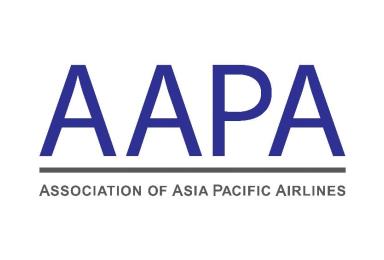KUALA LUMPUR, 27 July 2022: Asia Pacific airlines report robust growth in international passenger demand, as an increased willingness to fly continues to drive leisure and corporate travel recovery, according to June traffic figures released Tuesday by the Association of Asia Pacific Airlines (AAPA).
International passengers rose more than six-fold year-on-year to a combined 9 million in June, bringing demand to 28.3% of the corresponding pre-pandemic month in 2019. As measured in revenue passenger kilometres (RPK), demand rose by a robust 509.3%, significantly outpacing the 139.5% expansion in available seat capacity. As a result, the average international passenger load factor jumped by 46.7 percentage points to reach a new pandemic high of 76.9%.
By contrast, the slowing of international trade flows, amid a globally worsening inflationary environment, further dampened demand for air shipments. Consequently, international air cargo demand, measured in freight tonne kilometres (FTK), fell by 4.1% year-on-year in June. With the recovery in passenger services, increased bellyhold space contributed to a 5.7% growth in offered freight capacity. This led to a 6.9 percentage point decline in the international freight load factor to an average of 67.2% for the month.
AAPA director general Subhas Menon commented on the results: “The recovery of international air travel is well underway, only dampened by the weakening of air cargo demand due to declining exports and continuing supply chain constraints.”
He noted that “the region’s airlines are resuming flights to more destinations, as economies reopen for business and international travel. This is a welcome change that was a long time coming. Although the number of international passengers carried by the airlines in the first half of 2022 is 330% higher than that of 2021, it is still well below pre-Covid levels. Meanwhile, escalating fuel prices and cost inflation are risks to the nascent recovery and return to profitability just as the industry emerges from its worst crisis.”
“Airlines are also confronting operational challenges that can slow the recovery as travel demand accelerates. While the region has not experienced the widespread chaos observed in other parts of the world, there are signs of strain in the aviation ecosystem due to workforce shortages. In the short term, hiring and retention incentives are being offered, but more needs to be done to rebuild the industry’s resilience for the future.”
Menon concluded, “To sustain the growth in air travel, cooperation among industry stakeholders and supportive government policies remains crucial in addressing operational constraints as demand picks up speed. Reasonable and durable measures are vital in the event of a deterioration in the public health situation or a new crisis.”






